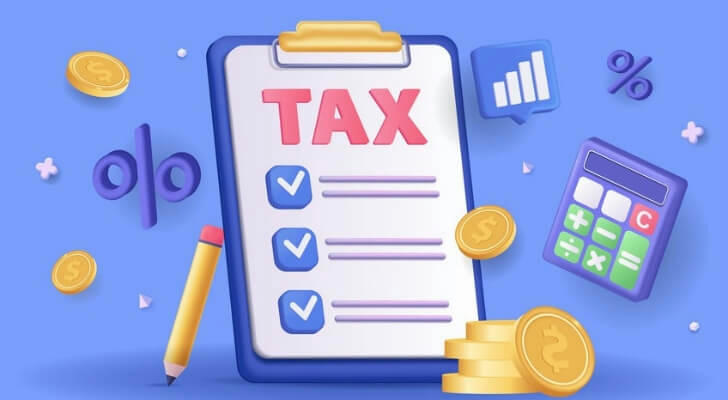Tax Planning: How to Effectively Reduce Tax Burden and Optimize Financial Status
Tax planning is a critical aspect of personal and business financial management. It focuses on reducing tax liabilities and optimizing the tax structure through strategic arrangements and legal methods. In the United States, tax planning helps improve cash flow and ensures long-term financial stability. This article outlines practical tax planning strategies, providing actionable advice and a real-life case study to guide individuals and businesses in managing their tax burdens.

Basic Principles of Tax Planning
Plan in Advance, Avoid Last-Minute Actions
Tax planning should be done throughout the financial year, not just at tax time. By planning ahead, individuals and businesses can structure income and expenses in a way that maximizes tax savings. Early action helps avoid costly mistakes and allows for better tax benefit utilization.
Maximize Deductions and Credits
The U.S. tax code provides various deductions and credits, such as for mortgage interest, education costs, and medical expenses. Taxpayers should familiarize themselves with these options and ensure they are taking full advantage of them. This could result in substantial savings.
Choose the Right Tax Structure
Businesses have the option to select different tax structures, including Limited Liability Companies (LLC), C-Corporations, and S-Corporations. Each structure carries unique tax benefits and requirements. Selecting the most appropriate structure can lower tax liabilities and simplify tax filing.
Tax Deferral Strategies
Tax deferral involves delaying income to future tax years, thus lowering the tax burden in the current year. This strategy is particularly useful for individuals or businesses experiencing income fluctuations, allowing them to smooth out tax liabilities over time.
Key Factors Influencing Tax Planning
Several factors influence tax planning decisions, including income levels, asset allocation, and family circumstances. Understanding these elements helps create effective tax strategies:
Income Sources and Types
Different income types are taxed at varying rates. For example, wages are taxed as ordinary income, while long-term capital gains are taxed at a lower rate. Knowing how income is taxed allows taxpayers to make informed decisions on how to structure their earnings.
Investment and Asset Management
Managing investments effectively is another crucial part of tax planning. Holding investments for the long term can reduce taxable capital gains, as long-term gains are taxed at lower rates. Additionally, strategically choosing investments that generate tax-advantaged income, such as municipal bonds, can further reduce tax liability.
Retirement Account Contributions
Contributing to retirement accounts like 401(k)s or IRAs is a well-established tax-saving strategy. Contributions to these accounts are typically tax-deferred, reducing taxable income in the current year. Additionally, certain retirement accounts allow for tax-free withdrawals, benefiting future retirement income.

Real-Life Case: Personal Tax Planning Challenges and Solutions
Case Background:
John is a high-income taxpayer with diverse income sources, including wages, dividends, and capital gains. He also has two children and incurs significant educational expenses each year. Despite seeking tax planning advice, John faces consistently high tax liabilities.
Problem Analysis:
John’s tax burden is primarily due to:
High income from wages and dividends that are not fully optimized for tax savings.
Short-term capital gains, which are taxed at a higher rate than long-term capital gains.
Educational expenses that could be further maximized for tax deductions.
Solution:
Optimize Income Allocation
John can reduce his tax burden by adjusting his investment portfolio to include more long-term holdings, which would be taxed at a lower rate for capital gains. Additionally, he could defer some income, such as delaying bonuses until the following year to lower his taxable income in the current year.
Utilize Education Tax Credits
John can take advantage of education tax credits, such as the American Opportunity Tax Credit (AOTC) and the Lifetime Learning Credit (LLC), to offset some of his children’s education costs. These credits can provide a direct reduction in his tax liability.
Family Tax Planning
By transferring some of his assets to his spouse or adult children, John can reduce his own tax burden, as he can take advantage of lower tax brackets for other family members.
Maximize Retirement Contributions
John could increase his contributions to his 401(k) plan, which would reduce his taxable income for the current year. These contributions would also provide future tax-deferred growth, enhancing his retirement savings.
By applying these strategies, John could significantly reduce his tax liability and improve his financial situation.

Conclusion
Effective tax planning is an essential part of both personal and business financial strategies. By planning ahead, making informed decisions about income, expenses, and investments, and taking advantage of available tax deductions and credits, individuals and businesses can reduce their tax liabilities. The real-life example of John demonstrates how strategic tax planning can lower the tax burden and optimize overall financial health. While tax planning requires an understanding of complex tax laws and regulations, it is an invaluable tool for ensuring long-term financial success.
